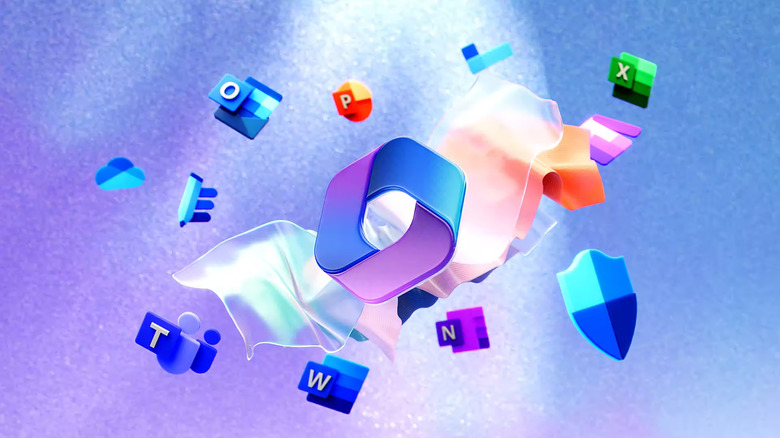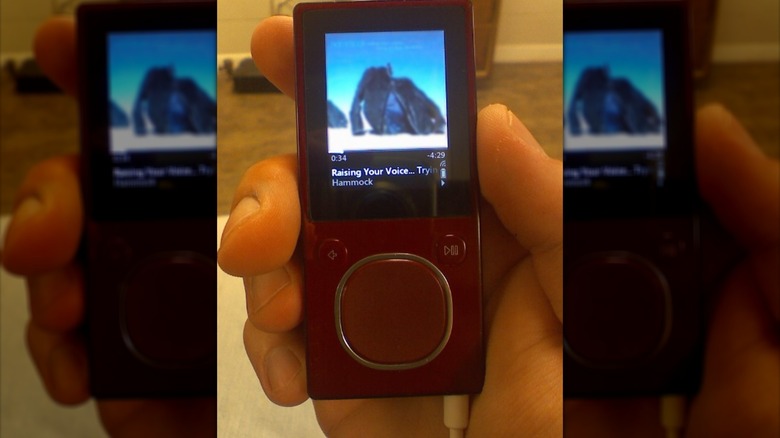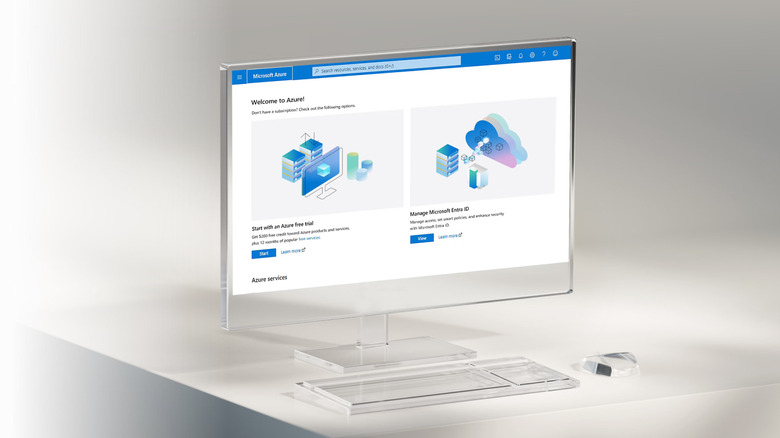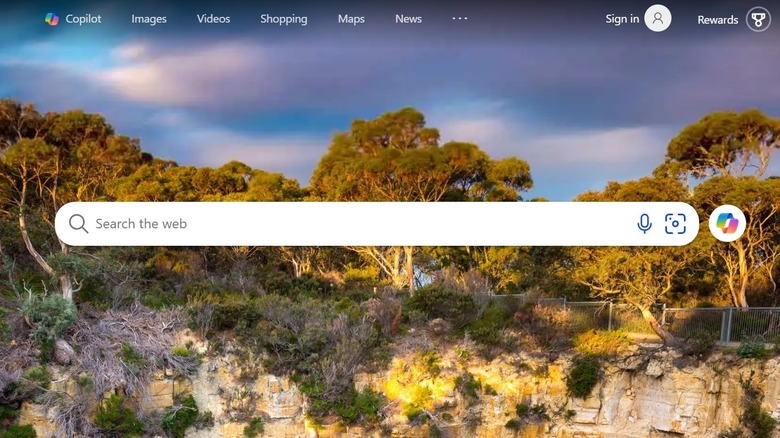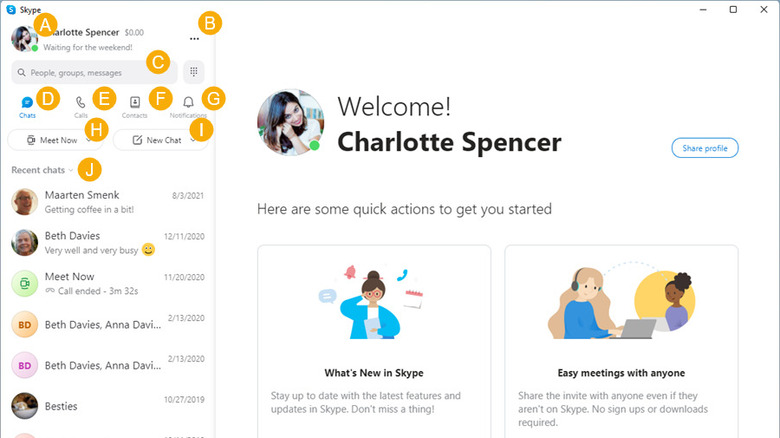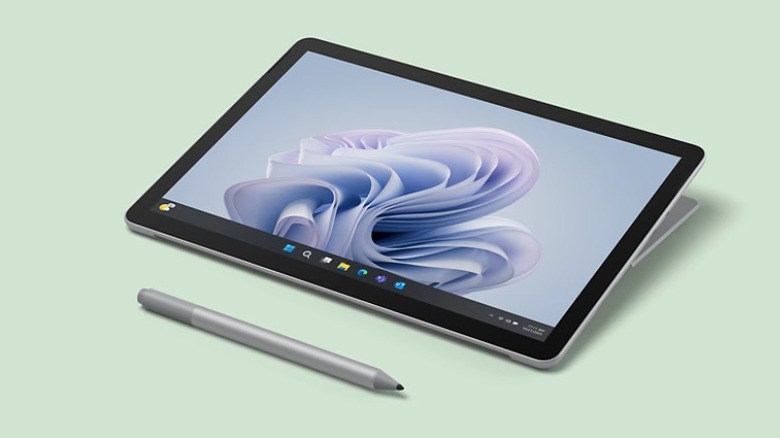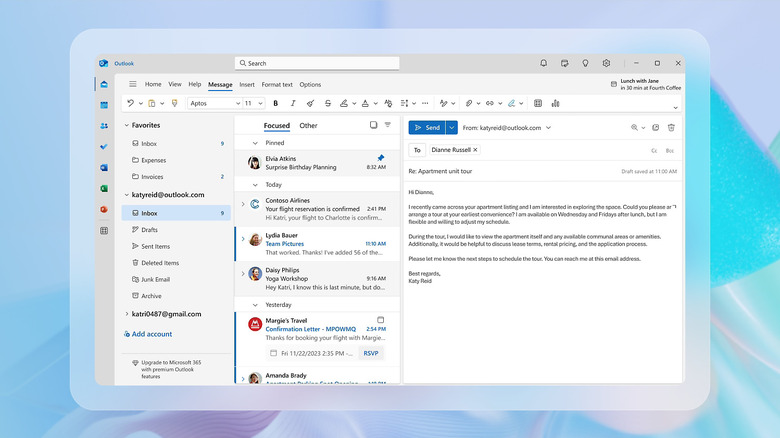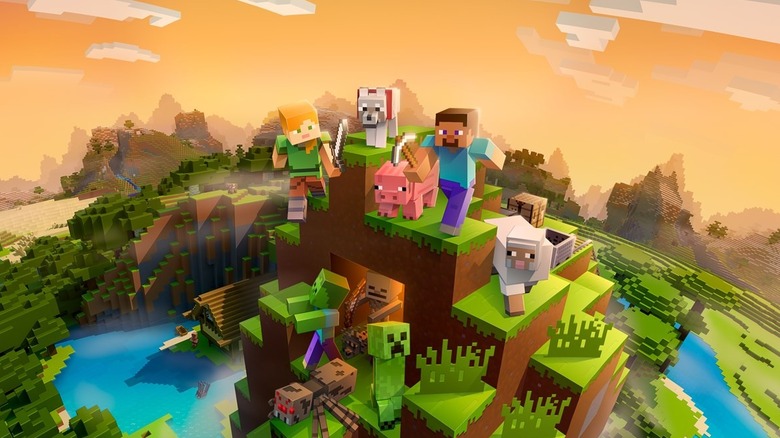12 Of The Most Important Moments In Microsoft's History
We may receive a commission on purchases made from links.
When you think of Microsoft, the first thing that springs to mind might be the desktop PC, which is essentially synonymous with Microsoft's Windows operating system. Maybe you picture the Microsoft logo, which is instantly recognizable to many, and you can find it everywhere. Or maybe you think of super-famous co-founder Bill Gates and his billions... and his lesser-famous co-founder, the late Paul Allen.
Microsoft has released some groundbreaking products, and its OS continues to dominate the PC market, with macOS, Linux, Chrome OS, and other operating systems trailing far behind. However, the company has had just as many flops over the years, though some served as turning points on the path toward bigger and better things.
Not every product or launch has been successful, but many important moments have marked the brand's timeline, from its first debut in 1975 to its biggest launches since then. Various acquisitions have also changed the tech landscape, at Microsoft and beyond. And while there is a shady side to Microsoft, there is a lot to celebrate, especially as the brand continues to be hugely successful. Here are some of the most important moments throughout Microsoft's history.
Windows 1995 changed PCs
Microsoft first debuted in 1975, with Bill Gates and Paul Allen at the helm. The brand was sometimes known as Micro-Soft back then, but the name soon evolved. One of the earliest computers Microsoft had a hand in was the Altair 8800, which the brand developed software for. However, the turning point was the release of Windows 1995.
Windows originally debuted in 1985, but it wasn't until a decade later that Microsoft hit on a product that it could really sell to the masses. While Windows 1995 was technology for personal computers, it was also billed as software for the "serious PC user." If your family was an early adopter of PC technology like mine, you might remember booting up your computer to doodle in Paint or try your hand at Minesweeper. You might also remember dialing up the internet — though it was a couple more years before Google came onto the scene, and we did have to settle for Ask Jeeves (now Ask.com) for a while.
Still, Windows 1995 was revolutionary, and not just for a 6-year-old me sitting at my first-ever personal computer equipped with a word processor. The OS made so many things possible for casual PC users that previously would have required coding by veritable experts. Since the first version of Windows released, Microsoft has produced at least 10 more, not including different versions of the same year (e.g. Windows 10's many iterations).
Microsoft launched the Xbox in 2001
As a younger millennial, I narrowly missed the window of popularity for Game Boy and, subsequently, the Zelda craze. I never owned an early Nintendo product, but when Microsoft released its first Xbox in 2001, my friends and I were obsessed.
No more blowing on cartridges to get games to work (I witnessed this at my friend's Nintendo-equipped house) — the Xbox had a disc system. It also had some onboard memory, so you could save your game progress much more easily than on my friends' older gaming systems. With an adapter, you could also watch DVDs on the Xbox, which was epic for the time.
A few years later, the Xbox 360 came out, which young me learned to expect, given how fast technology was changing by that point. Fast forward a few decades, and Microsoft discontinued the Xbox One, the successor to the 360. Many Xbox features were also canceled, and there are many you probably never even heard of. However, the original Xbox was a revolutionary gaming system for kids who grew up on vintage Atari, and it lives on today with the Series X | S.
The Zune battled the iPod in 2006
The iPod is iconic, and it clearly hung on far longer than Microsoft's competitor. However, while Microsoft's Zune might have been one of its biggest mistakes, it was nonetheless an important moment in Microsoft history.
I was in high school when the Zune came out, and I recall it being priced similarly to the iPods of the era. I owned an iPod Mini in those days, but never had a Zune of my own, despite wanting one. While Apple's iPods didn't start out with color screens, the Zune was released with one.
By 2009, the Zune HD gained a touchscreen, in a bid to keep up with Apple's iPod Touch, which had launched in 2007. However, despite the fact that the Zune line featured impressive devices it only ever made up about 2% of the music-player market.
The Zune was put to rest in 2011. It may not have taken over its market, but it had a big impact at Microsoft — many of the lessons the company learned were applied when creating the first Windows phones. Though the Zune wasn't successful by most standards, it was a turning point in the brand's trajectory.
Azure cloud services launched in 2008
If you've never heard of Azure cloud storage, we don't blame you. Hang tight though, because it marks yet another important moment in Microsoft's history. Azure launched in 2008 and was an online version of Windows that was basically a way for developers to deploy apps in the cloud. Later, it shifted into a multi-dimensional cloud application.
More than 15 years after its launch, Azure now makes up a 25% share of the cloud infrastructure market, coming second only to Amazon Web Services. Google Cloud is the third runner-up, and while Google is a recognizable brand, its cloud services don't get much attention from those outside the industry.
Service-wise, Azure has everything from development space for apps to storage for data backup to networking services and even virtual computing capabilities. Just because you haven't heard about it doesn't mean Azure isn't successful — few big-name competitors offer the same suite of services.
Diving a bit deeper, Azure sells some services, but it also offers a suite of freebies like AI Anomaly Detector, AI Bot Service, AI Immersive Reader, API Management, and a lot more. Microsoft makes cloud security a high priority — like other providers — and seems to have mastered the art of the cloud.
Bing debuted in 2009
Like other tech giants, Microsoft has extended its reach beyond operating systems and gadgets. One of the brand's developments in 2009 was the advent of Bing. Before that, Microsoft had launched its first search engine in 1998 — MSN Search — as well as Windows Live Search in 2006, but it's Bing that is still well-known today.
It might be hard to believe, but Bing is actually doing well for itself these days, even in the shadow of Google. The search engine receives more than 1.3 billion hits per month on average, which is far fewer than Google's rate of 85.5 billion visits – but Bing is the runner-up when it comes to search engine popularity. It tops Yahoo!, DuckDuckGo, Ask.com, AOL, and other search engines, so it doesn't seem like the service is going anywhere.
Microsoft is also improving Bing all the time, so the search function isn't left to languish. Bing has also extended to products like Bing Maps on Android, and it released an October 2024 update on its work with Bing generative search. Bing might not be leading in the search engine race, but it's hanging in there and making advances in the realm of AI, too. In May 2023, Bing Chat AI rolled out, and the tool also incorporates an image-based visual search.
Microsoft made its first phone in 2010
Of the lessons Microsoft seemed to learn from its venture into phones, probably the biggest is that it's better at making PCs. Still, the Windows Phone was a big moment in the brand's history. The rollout began with various Nokia devices, which made up the bulk of sales, and anyone who ever owned an early Nokia phone will know that the brand is known for durability and longevity.
That said, Windows Phones never really took off the way Apple's iPhone did, for example. By the time it came out, Android and iOS were well-established, not leaving much room for another brand's OS or app store. The company won out on the PC side of things, but Microsoft decided to discontinue the Windows Phone in 2017.
One notable success from the Windows phone was the voice assistant Cortana, though Microsoft also discontinued it despite its similar level of accuracy to Google. The discontinuation was most likely because the tool wasn't as ubiquitous as Google Assistant, Siri, or Alexa since it only came stock on Windows devices. When Windows Phones tanked, there wasn't as much of a platform for Cortana, so it fell to the wayside.
Microsoft acquired Skype in 2011
Years before there was FaceTime, there was Skype. It wasn't originally a Microsoft product, but the company's acquisition of it in 2011 was a big moment for the brand. Skype was initially founded in 2003, and when Microsoft bought it, it continued to run Skype as a subsidiary rather than folding it completely under the Microsoft umbrella.
The technology Skype uses is called voice over internet protocol (VoIP), which converts analog signals to a digital format to send, and then the opposite to receive, and it's generally a free service (depending on where you're calling). At the time, this was a big deal — enough so that eBay bought the company for $2.5 billion in 2005. A few years after that, Microsoft made its own bid.
When Skype launched, video chat was not nearly as widely available as it is now. Remember, FaceTime didn't come out until 2010 with the iPhone 4. By that time, Skype already had 600 million users.
Skype may not be the most popular chat app today, but it still has millions of users — despite losing many hundreds of millions over the years, likely due to the increase in options (including totally free ones). It was probably well worth the $8.5 billion Microsoft paid, and despite lower estimates from Statista, Microsoft says there are over 160 million active users on the platform.
Microsoft's first Surface tablet debuted in 2012
Microsoft has quite a history of competing with other big-name brands, and it picked a fight with Apple for some of the tablet market in 2012 with the Surface hybrid tablet. The first Surface came with a built-in kickstand, a thin design, and a cover or keyboard cover. The relatively simple tablet has evolved over the years, but that first iteration helped Microsoft break into a market it hadn't yet explored.
Microsoft hasn't made massive waves in terms of market share, unfortunately. While Android has overtaken iOS as the most popular tablet operating system, Apple still leads the tablet market. In the third quarter of 2024, it had about 32% market share globally. Android tablets constitute around 45% market share, but that's across all brands — Samsung is Apple's biggest individual competitor in the space, with 19% market share. That doesn't leave much room for everyone else, but Microsoft hasn't given up on the Surface yet.
Despite its relative shortcomings, the Surface is still one of the best tablets for students today. Given that it's built with PC power in mind, there is a lot to love, though most other tablets have similar functions and more app support. If you're in the market for a Surface tablet, a well-equipped Surface Pro 2-in-1 costs about $1,000 on Amazon.
Outlook revolutionized email in 2013
The Outlook email client that you know and hopefully love today has undergone many changes over the years, but a pivotal turning point was in 2013. That was when Microsoft overhauled what was formerly known as Hotmail.
Going back to the beginning, Microsoft bought Hotmail in 1997, and it was just email at that point. Hotmail was one of the first email clients available, even before Gmail. Gmail came out in 2004, but in its early days, you had to know someone who already had an account in order to get access. Those wild days didn't happen with Hotmail, though the email service did change a lot over the years.
First, Hotmail became Windows Live Hotmail (in 2005), but Microsoft later shifted it to Outlook.com in 2013. At the same time, Microsoft already had a tool (a personal information manager software system) called Outlook, so things got a bit messy there. To simplify it, Outlook is an app that does a few different things (calendar, contacts, etc.) but also allows you to check your Outlook email — even if you still have a Hotmail account.
Microsoft also hasn't stopped making improvements to its email platform. There are some cool hidden features in Outlook, and it's super popular even now. In fact, Outlook is the third most popular email client today, with 4% market share, after Apple's 55% and Google's 30.57%.
Microsoft bought Minecraft in 2014
Minecraft is one of the most popular games of all time, so it's no wonder Microsoft wanted a piece of that pie. Developer Mojang first released Minecraft in 2011, and Microsoft bought the rights to it (along with the company) in 2014. Since then, it has launched a Bedrock Edition on the Microsoft Store, though the mod-friendly Java version is still available.
As far as differences between Java and Bedrock, for you non-gamers, the biggest differences are that Microsoft's Bedrock offers a simpler way to play with friends. Bedrock is also available on multiple platforms, including Windows, on mobile, and on consoles (like Xbox, of course). For Bedrock, you need a Microsoft account, which lets you join servers. Java is only available on Windows, Mac, and Linux, but it has third-party servers you can play on.
However, the in-game differences aren't relevant in the context of Microsoft's buyout, the bottom line being that Microsoft wanted to get more into gaming, which is understandable given the rise of Steam and other gaming platforms. After all, an Xbox-only gaming offering might not help Microsoft excel in the industry — but Minecraft didn't come cheap at $2.5 billion.
Microsoft bought LinkedIn in 2016
Microsoft owns a handful of brands that might surprise you, and we'd bet LinkedIn is one of them — the company took over the site in 2016. LinkedIn launched in 2003, and became wildly successful as a professional networking tool, with no true competitors to date. Although a quick search suggests sites like Indeed and Jobcase, those don't seem to be direct competitors functionality-wise.
Microsoft made a smart decision to invest early; purchasing LinkedIn cost the company a massive $26.2 billion, but since 2016 it has generated over $77 billion in revenue. Microsoft also integrated some of its tools into LinkedIn, making it a true part of the brand family. There's even a Windows app for LinkedIn if you want to skip the browser experience, although it didn't earn rave reviews at first, and Microsoft has ended up removing some less-used features over the years.
Of course, things aren't always completely rosy with LinkedIn. Given Microsoft's (well, everyone's) interest in AI tools lately, it's not entirely surprising that the company is using personal data pulled from LinkedIn for training purposes. There is a way to turn off this function under the Settings and Privacy settings, but the default is generally set to 'on.'
Microsoft launched Teams in 2017
It might be the bane of many remote teams' existences, but Microsoft's Teams is a massive player in the professional communication niche. The tool launched in 2017, a few years after Slack. Unlike Slack, Teams doesn't exactly stand alone. Instead, it's supported by the Microsoft 365 family, and widely used by many organizations for team communication, whether the team is in the same office, working from home, or working remotely from different countries.
That integration with Microsoft 365 might be why many companies seem to choose Microsoft tools over Slack and other alternatives. The proof? Microsoft Teams usage increased by about 50 million daily active users between 2022 and 2023, hitting 320 million users — a number that still holds today. In contrast, Slack reportedly has 47.2 million daily active users in 2025.
It is appealing to be able to work on Microsoft documents (like Word files or PowerPoint presentations) without leaving Teams, and Teams does have some robust video calling features. You can also use Teams to replace a phone, which has its appeal in a professional environment.
